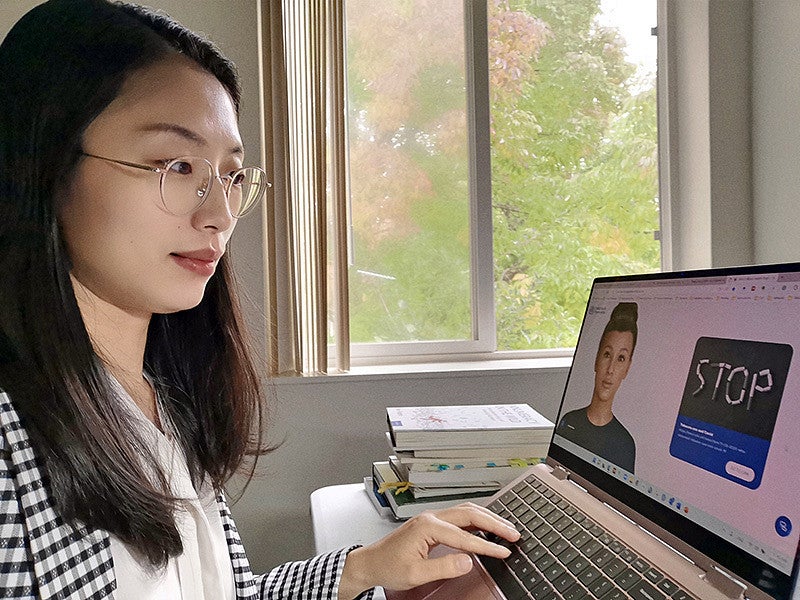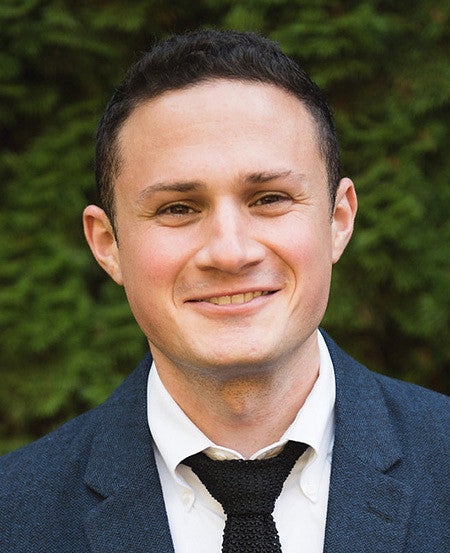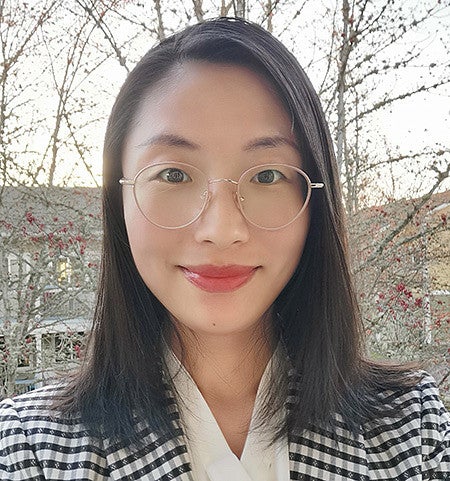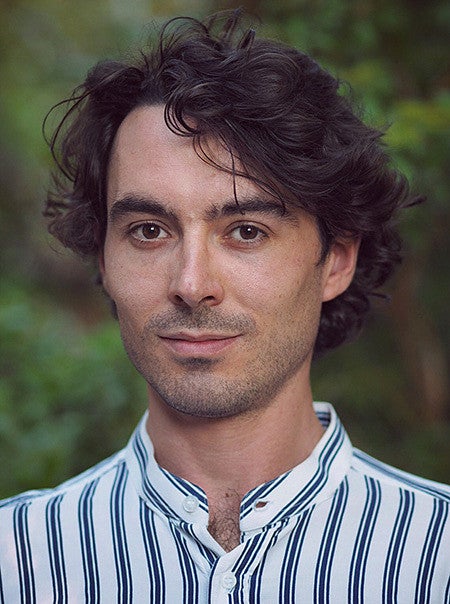
Ever wonder how virtual reality can help solve environmental issues? Or if an online chat can make it easier to quit smoking?
These are the types of questions student and faculty researchers in the Center for Science Communication Research (SCR) at the School of Journalism and Communication (SOJC) work to answer. To help them conduct that research, the center gave up to $3,000 to each UO faculty, postdoctoral fellow and graduate and undergraduate student recipient through the SCR small grants program.
The program is accepting 2022 applications now, with an application deadline of Friday, November 11. To apply, researchers explain the methods for the proposed research and its broader impacts — including theory development and the capacity to benefit society — and describe how they plan to use the funds.
We talked to three 2021 SCR small grant recipients — an SOJC Communication and Media Studies PhD student, a Journalism Master’s student and an SOJC faculty member — to find out how they are using the funds to push their research forward.
The connection between deception and dehumanization

According to SOJC assistant professor and small grant recipient David Markowitz, the SCR small grant program is “a great way to springboard ideas and get new, creative projects off the ground for research.”
His SCR small grant helped him delve deeper into two areas of research: deception and dehumanization. Deception describes people who are intentionally misleading someone, whereas dehumanization is the idea that people sometimes believe others, particularly outgroups, are less than human. Using his $3,000 SCR small grant, he is attempting to blend the two ideas for the first time into a concept he has coined “deceptive dehumanization.”
Markowitz conducted an online experiment to investigate how people communicate false support to those they see as less than human. Participants were asked to either lie or tell the truth about a group they viewed as less than or more human and write about their thoughts for five minutes. The research revealed that when people were being deceptive about the group they humanized, they had the greatest rate of negative emotions.
“That’s a powerful realization because we are communicating an incredible amount, and the traces we leave behind on the internet are vast,” Markowitz said. “So if we learn to harness language in this important way, we can potentially identify people who have illicit or mean intent towards others.”
Chatbots that help you stop smoking

The tobacco epidemic has devastated the globe, but for Tingyu Zou, an SOJC Communication and Media Studies doctoral student, the impact is much more personal. Three years ago, her father died from a smoking-related illness, and she has been determined ever since to help halt the addiction’s impact on others.
The COVID-19 pandemic makes tobacco cessation more urgent because smoking is associated with increased severity of disease and death in hospitalized COVID-19 patients. Young adults are a key target of smoking cessation efforts since quitting as a young adult increases the chances that a smoker will avoid the more serious health consequences of smoking.
Prior studies suggested that young smokers are more likely than older adults to attempt to quit but less likely to report using cessation treatment counseling or medications that have the potential to increase the likelihood of their success. Zou is researching the effectiveness of chatbots as an information source for young adults by investigating the likelihood that young smokers will choose a chatbot over traditional channels to process quitting information. In addition, her research will investigate the role of individual differences among young smokers, such as their motivation to quit and their literacy in e-health apps, artificial intelligence (AI) and numeracy, on the persuasive effect of the chatbot smoking cessation intervention.
Zou will use her $1,980 SCR grant to study the persuasive effects of smoking cessation intervention delivered through an AI-powered chatbot. She will use the funds to collect data through an online experiment where participants either view quitting information delivered by a chatbot or a traditional medium such as a pamphlet.
“I want to further people’s understanding of human-to-robot communication in the context of health persuasion and the psychological mechanisms of its persuasive effects,” Zou said.
How immersive media influences attitudes toward prescribed fire and habitat restoration

As a dual master’s recipient in geography and journalism, recent UO graduate Stuart Steidle ’22 explored whether immersive field tours of habitat restoration projects could warm people up to the idea of resuscitating fire-dependent, prairie-like landscapes in the upper Midwest. His work complements the multidisciplinary efforts of Pennsylvania State’s Visualizing Forest Futures (ViFF) team in their bid to unpack physical and sociocultural dimensions of forest change near the Great Lakes. ViFF member Melissa Lucash, Ph.D. (UO geography), inspired Steidle’s multimedia inquiry based on her own work revisualizing 2D spatial data as 3D virtual simulations to present the effect climate change will have on Wisconsin’s Northwoods.
Equipped with 360-degree audio-visual equipment, a drone, standard cameras and the patience of a wildlife photographer, Steidle conducted fieldwork across Wisconsin’s pine barrens to capture essences of this rare, open and vanishing habitat. Steidle integrated the 3D footage into the video game software Unreal Engine and streamed it as a tour online while also creating a related 2D explanatory webpage. Both versions show how ecosystem managers convert forests back to pine barrens. His study measures the impact that immersive media versus conventional media have on people’s attitudes toward open-habitat restoration that includes a combination of logging and prescribed fire.
He used his grant, which was just shy of $2,000, to compensate participants for his online study and to cover the cost of streaming his immersive tour.
Steidle’s research showed that both 2D and 3D media products significantly enhanced participants’ attitudes toward pine barrens and the clearcuts and prescribed fires that managers use to generate them. Although both media stimuli had equivalent performances, Steidle was intrigued to see that participants who entered the study with neutral or negative attitudes toward pine barrens were more likely to approve of the habitat restoration when exposed to the immersive tour.
“My study showed me the value that practitioners and scientists place on storytellers and communication specialists to distill the key messaging and lessons of their science to their audience,” he said.
That value is well placed, based on a series of excited comments that virtual tour participants provided as volunteer feedback in Steidle’s survey. What these joyful responses tell him is that immersive media has an effective place in the toolkits of storytellers and artists working to enrich people’s understanding of the natural world.
—By Whitney Conaghan, class of ’23
Whitney Conaghan, class of ’23, is a public relations major and multimedia minor. She is currently working as a social media and writing intern for the SOJC’s Communication Team.
